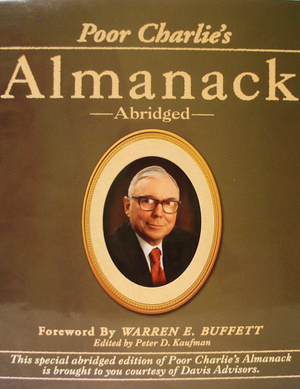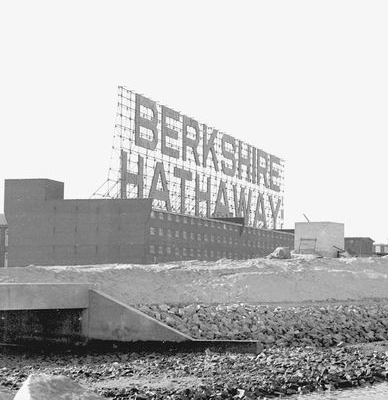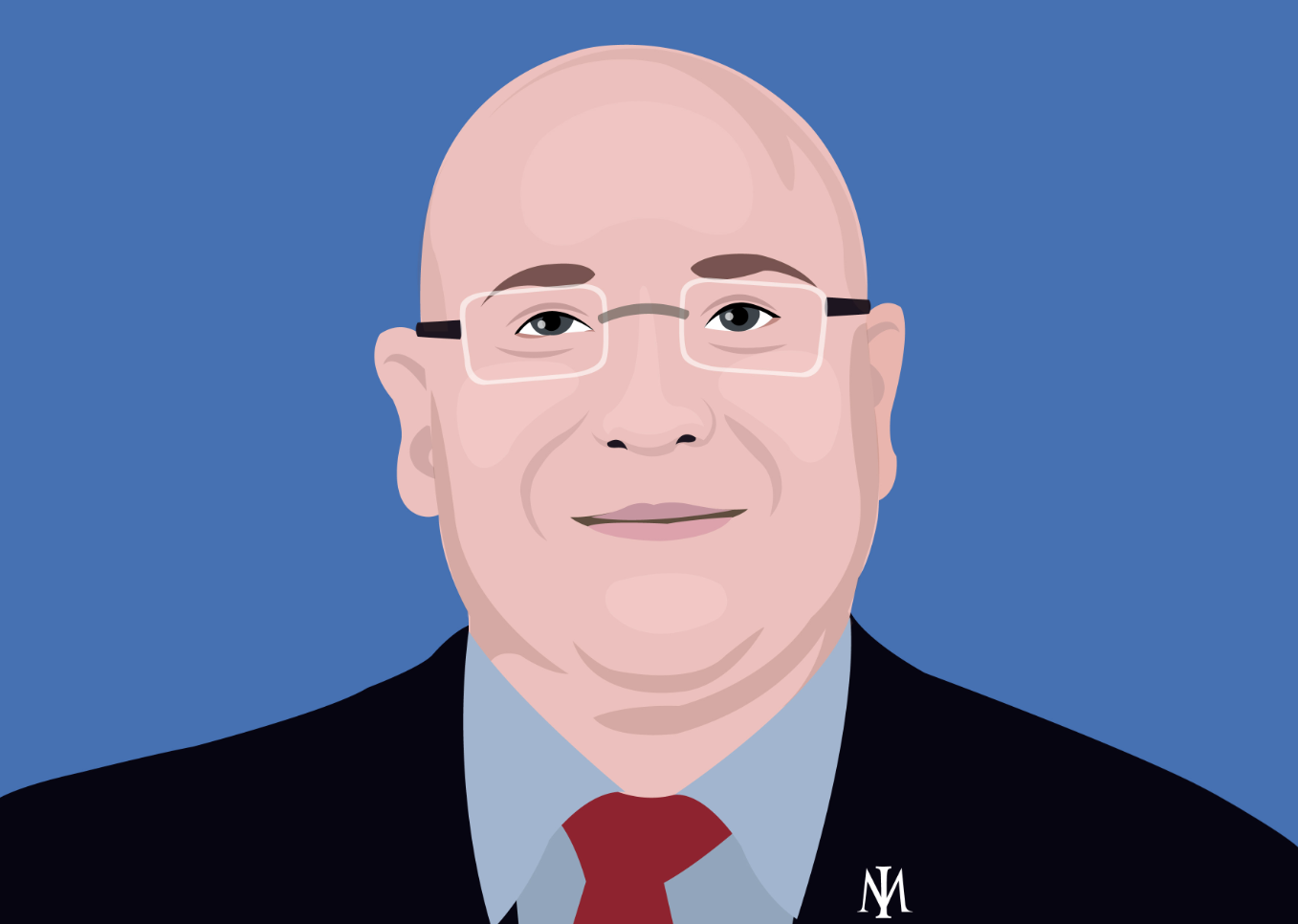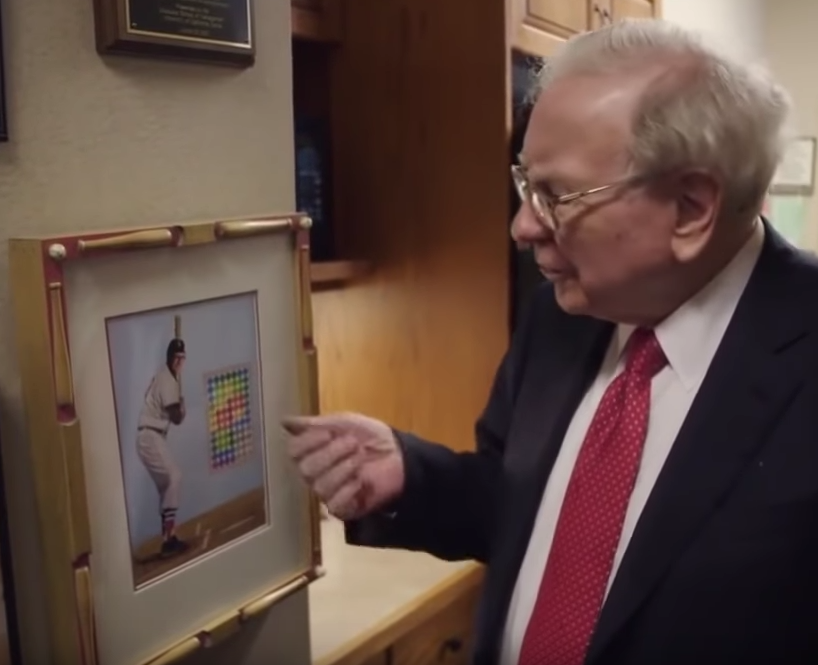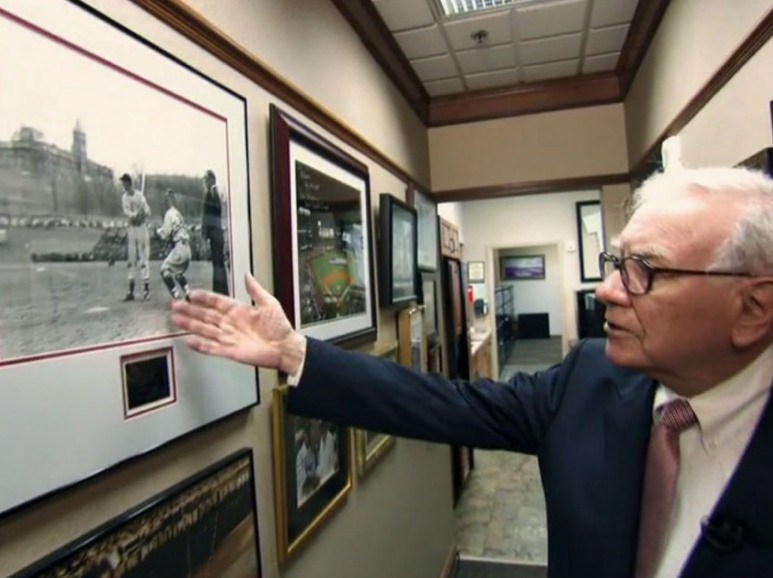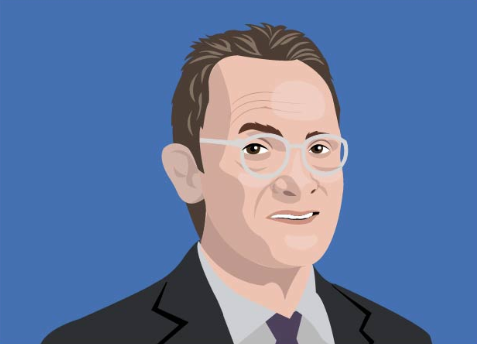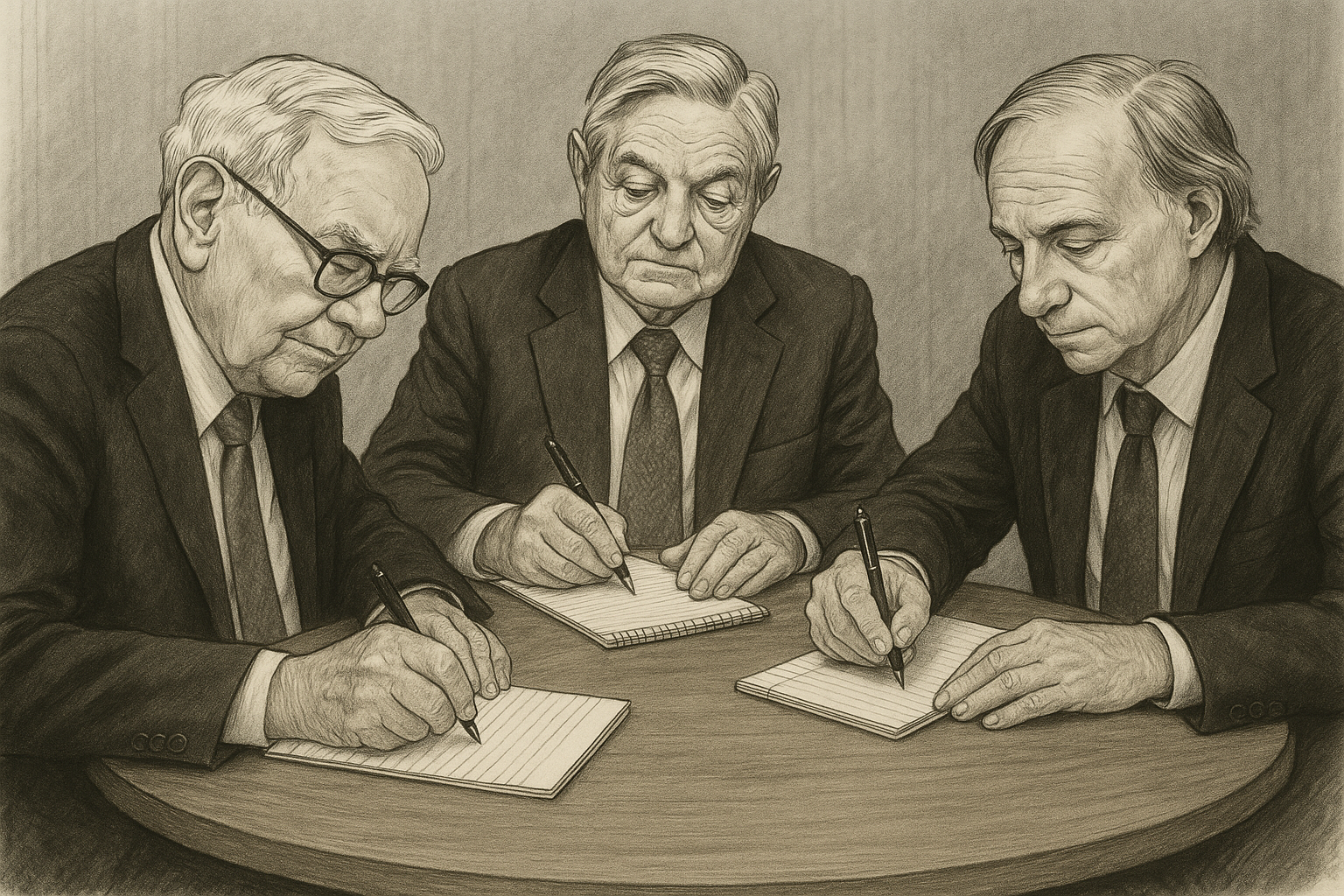The Investment Masters recognize the benefits of having mental models to help understand the key characteristics of a business, the factors driving it's success and the likelihood of maintaining a competitive advantage to drive future growth. In the book, the Psychology of Intelligence Analysis, Richards Heuer noted "little attention is devoted to improving how analysts think". In the book's opening chapter, entitled "Thinking about Thinking", he notes:
"[Analysts] construct their own version of "reality" on the basis of information provided by the senses, but this sensory input is mediated by complex mental process that determine which information is attended to, how it is organized, and the meaning attributed to it…To achieve the clearest possible image .. analysts need more than information ..They also need to understand the lenses through which this information passes. These lenses are known by many terms - mental models, mind-sets, biases or analytic assumptions."
Charlie Munger is a huge advocate of the need for a wide array of mental models for sound judgement. In a speech to Stanford Law School titled "A Lesson on Elementary, Wordly Wisdom, Revisited" he asserted:
"I've long believed that a certain system - which almost any intelligent person can learn - works way better than the systems that most people use… What you need is a latticework of mental models in your head. And you hang your actual experience and your vicarious experience (that you get from reading and so forth) on this latticework of powerful models. And, with that system, things gradually get to fit together in a way that enhances cognition."
Charlie Munger recognized the need to take the big ideas from other faculties such as science, mathematics, psychology, history, behavioural economics and biology and have them at hand to draw inferences from in the investment process.
"If you want to be a good thinker, you must develop a mind that can jump the jurisdictional boundaries. You don't have to know it all. Just take the big ideas from all the disciplines. And it's not that hard to do."
“For some odd reason, I had an early and extreme multi-disciplinary cast of mind. I couldn’t stand reaching for a small idea in my own discipline when there was a big idea right over the fence in somebody else’s discipline. So I just grabbed in all directions for the big ideas that would really work. Nobody taught me to do that; I was just born with that yen.”
"You must routinely use all the easy-to-learn concepts from the freshman course in every basic subject. Where elementary ideas will serve, your problem solving must not be limited, as academia and many business bureaucracies are limited, by extreme balkanisation into disciplines and sub disciplines, with strong taboos against any venture outside assigned territory."
Studying broadly and applying different models from outside the realms of finance can help an investor better understand a business. Concepts such as networks effects, non-linearity, economies of scale, psychological biases, winner-takes-all, leverage, first-mover-advantage, Darwinian evolution, complex adaptive systems, self-organised criticality, incentives/agency costs and autocatalysis are just a few.
Charlie Munger considers there are about one hundred mental models to learn and different models are relevant to different businesses.
"You've got to learn one-hundred models and a few mental tricks and keep doing it all your life. It's not that hard." Charlie Munger
"You have to learn the models so that they become part of your ever-used repertoire." Charlie Munger
"You need a different checklist and different mental models for different companies." Charlie Munger
It's more than likely if you studied a typical finance course, you missed a large part of what's important in investing [Columbia is a rare exception]. Most finance courses don't cover human psychology, philosophy, financial history nor do they spend the time teaching the lessons behind the Investment Masters success. In fact, most finance courses focus on building investment spreadsheet models, analyzing financial ratios and understanding the capital asset pricing model and efficient market theory. The latter two are mental models considered laughable by most of the Investment Masters.
It's important to continue the learning process and broaden your education to enhance multi-disciplinary thinking to increase the odds of investment success.
"As I look back on it now, it's obvious that studying history and philosophy was much better preparation for the stock market than, say, studying statistics." Peter Lynch
"The neat theories I had learned at university didn't come close to describing the true complexities of the economy or financial markets." Guy Spier
“If I’ve learned anything over the past decade it is this: The art of stock picking is more about synthesizing information across disciplines and making decisions than a strict devotion to finance.” Allan Mecham
"If your professors won't give you an appropriate multi-disciplinary approach, if each wants to overuse his models and underuse the important models in other disciplines, you can correct that folly yourself." Charlie Munger
"Professor Newcomb taught [me] not only political economy, but philosophy, logic ethics, and psychology - all in one course. Today these subjects would be fragmented among several professors. I believe there was considerable advantages in being taught all these subjects by the same man. Too many educators seem to have forgotten that you cannot teach good economics, good politics, good ethics, or good logic unless they are considered together as parts of one whole. Colleges as a rule teach economics badly. With over-specialisation has also come a tendency to mistake information for education, to turn out "quiz experts" who are crammed full of useful detail but who have not been trained how to think." Bernard Baruch
The value of mental models are embraced by many of the world's greatest investors..
“You’ve got to learn everything. I started with physics and mathematics and I got into economics, history, law and politics. I like everything and that’s what you need. You might need models from biology.” Li Lu
“Our core philosophy starts with the belief that making intelligent, rational decisions requires a multi-disciplinary framework that informs broad and deep understanding.” Christopher Begg
"Some people think in words, some use numbers, and still others work with visual images. I do all of these, but I also think using models." Ed Thorp
“The most successful businesspeople I know have mental models - ideas and lessons they’ve picked up from books, experiences, people.” Nick Sleep
“You’ve got to mesh many different disciplines into one. That’s our edge.” Marc Lasry
“When we have enticed the college graduate into our graduate schools, we at once encourage him to grow professional blinders which will confine his vision to the narrow research track, and we endeavour – often successfully – to make out of him a truffle-hound, or if you prefer, a race-horse, finely trained for a single small purpose and not much good for any other ... Jacob Viner, in 1950, argued that academic departments needed to encourage their students in broader intellectual fields since solving real world problems was likely to involve skills learned in several different disciplines. Charlie Munger, long-time Vice Chairman of Berkshire Hathaway, has encouraged a similarly multi-disciplinary approach to investment, a proposal which Marathon has consistently echoed.” Marathon Asset Management
“You have to realize the truth of biologist Julian Huxley’s idea that ‘Life is just one damn relatedness after another’ So you must have the models, and you must see the relatedness and the effects from the relatedness.” Charlie Munger
“I have been in the business since 1973, so I have been looking at companies for a long time. There are a lot of things in my head. There are a number of different models of the kinds of business or situations that can work. It may be the local monopoly concept, the low-cost commodity producer concept, the consolidated industry that has come down to a few competitors, a basic essential service that isn’t going to stop growing, or an industry that may be growing too slowly to attract any competition. So, there are a lot of different models.” Glenn Greenberg
"We don’t really use screens. Instead, we use ‘mental models’ which help us find good investments. Some examples of these are the capital cycle, the power of incentives and insider ownership." James Seddon, Hosking Partners
A latticework of mental models improves creativity as Richards Heuer noted in the 'Psychology of Intelligence Analysis':
"Talking about breaking mind-sets, or creativity, or even just openness to new information is really talking about spinning new links and new paths through the web of memory. New ideas result from association of old elements in new combinations. Previously remote elements of thought suddenly become associated in a new and useful combination. When the linkage is made, the light dawns. This ability to bring previously unrelated information and ideas together in meaningful ways is what marks the open-minded, imaginative, creative artist."
The application of different mental models and multidisciplinary thinking can provide an edge by opening up investment insights that others haven't considered and hence are yet to be reflected in a security's price.
"If you have the patience and if you have the interest to really dig deep, then what you're going to find is if it's commonly held information or known information, you may come up with insights that others have not. This is what Charlie Munger talks about the latticework of mental models. You look at things through a different lens to try to see what can be different." Mohnish Pabrai
“You have to be naturally interested and curious about everything – any kind of businesses, politics, science, technology, humanities, history, poetry, literature, everything really effects your business. It will help you. And then occasionally you will find a few insights out of those studies that will give you tremendous opportunities that other people couldn’t think of.” Li Lu
"It's a multi- disciplinary habit that fosters some creative thinking. Throughout the week between conversations about business- specific objectives we will tend to revisit further questions and insights somebody has read on the subject. Subjects are typically in the large data sets of physics, biology, and human history." Christopher Begg
It's one of the reasons the Investment Masters spend more time thinking about businesses in preference to building huge spreadsheet models. The most important thing is to identify the key factors that are going to drive the business in the future and establish where a business will be over the medium to long term as opposed to next quarter's earnings.
“The best way to think about investments is to be in a room with no one else and just think. And if that doesn‘t work, nothing else is going to work.” Warren Buffett
“It’s not about the numbers. For most investments the factors that will drive long term success don’t have much to do with spreadsheets. They have to do with something other, either understanding human nature or understanding nuances about how certain aspects of how things work rather than running spreadsheets.” Mohnish Pabrai
The ultimate investments arise when a multitude of big ideas combine to create what Charlie Munger refers to as 'Lollapalooza Effects'. Consider a business such as Facebook which has benefited from the combination of a multitude of factors: winner-takes-all, network effects, economies-of-scale, human psychology [classical conditioning [pavlov], reciprocation, virtual empathy, habit/addiction etc], tailwinds from increased internet penetration/improved global bandwidth to name just a few.
“The most important thing to keep in mind is the idea that especially big forces often come out of these one hundred models. When several models combine, you get lollapalooza effects; this is when two, three, or four forces are all operating in the same direction. And, frequently, you don’t get simple addition. It's often like a critical mass in physics where you get a nuclear explosion if you get to a certain point of mass - and you don't get anything much worth seeing if you don't reach the mass." Charlie Munger
“Investment decisions are more likely to be correct when ideas from other disciplines lead to the same conclusions. That is the top most payoff – broader understanding makes us better investors… True learning and lasting success come to those who make the effort to first build a latticework of mental models and then learn to think in an associative, multi-disciplinary manner.” Robert Hagstrom
One you've started to build a repertoire of mental models it's important to keep learning and refining your models. There will be times when old models need to be discarded. To do so you must remain open minded.
"There's no rule that you can't add another model or two even fairly late in life. In fact, Ive clearly done that. I got most of the big ones quite early [however]." Charlie Munger
"In a system of multiple models across multiple disciplines, I should add as an extra rule that you should be very wary of heavy ideology." Charlie Munger
"Minds are like parachutes. They only function when they are open." Richards Heuer
It's time to put some mental models on the latticework ….
Further Recommended Reading:



